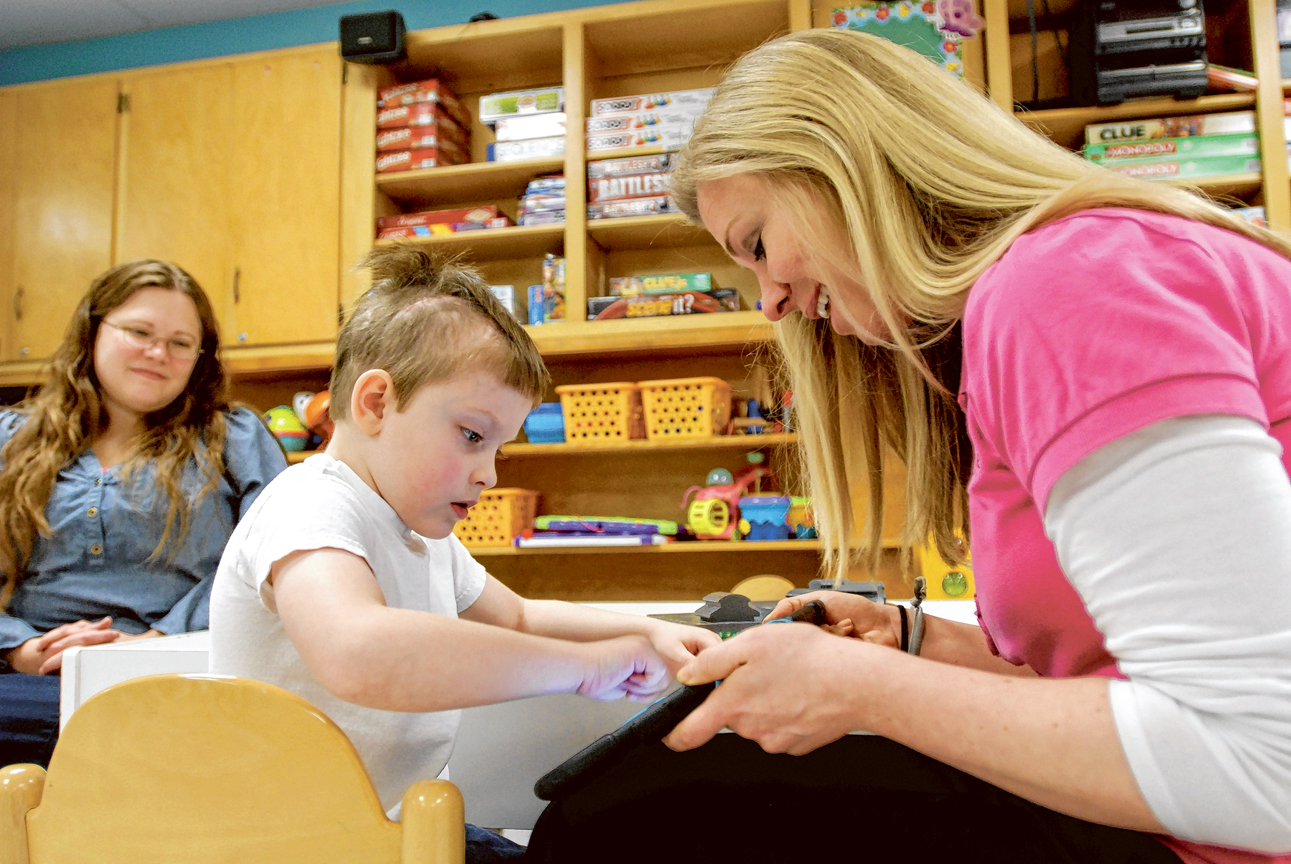March is Child Life Specialist Month. If you have no idea what that means, you're not alone. But these behind-the-scenes experts play a vital role in happiness and well being of children in the hospital.
We try to make the impossible possible," says Maggie Butler, explaining her job as child life specialist at Children's Hospital. She's baked cookies in patients' rooms, set up lemonade stands at the nurse's station, hosted ice cream socials on the hospital's rooftop garden. She's even played paintball.
"This little boy was so excited about a paintball gun someone had given him and was disappointed he couldn't play with it because he was in the hospital," she recalls. "I covered the back of his door with paper and let him shoot it. Physical therapy even used it later as an incentive to get him to sit up."
She's sitting in her office that's packed to the brim with colorful blankets and toys. On the floor is her distraction bag, which includes an iPad, puzzles, games, bubbles, music and more. At first blush her job seems all fun and games. But Butler is quick to point out it is "play with a purpose."
In that same magic bag is a doll she uses to explain medical procedures to little ones. The child can simulate on the doll whatever is about to happen to them, whether it's an IV stick or a feeding tube. The process empowers the child, greatly reducing anxiety. Often a little patient will sit stoically through a procedure that would make an adult cringe.
"Recently a little boy was getting a feeding tube. At the end he said, 'I'll miss you! This was fun,'" she says, half amazed.
There are only six child life specialists at Children's Hospital at Erlanger, but they cover a lot of ground. Ruth Bosshardt and Lauren Gaddis are in the emergency room, Jennifer Holstein covers outpatient surgery and Ashley
Zani handles the oncology and blood disorders clinic. Butler and Lois Simpson cover inpatient rooms on the 3rd and 4th floors as well as the pediatric intensive care unit. Butler handles day-to-day patient duties while Simpson schedules the pet therapy and special guests. Professional athletes, beauty queens, Ringling Brother clowns and even Santa have all made cameos at the hospital.
A child life specialist's duties are to educate, play, distract and normalize - basically to make the hospital less scary. Each child is given a colorful blanket and often a personalized pillowcase, toy or stuffed animal. The length of time a child spends in the hospital determines their relationship with Child Life. In the oncology clinic, where kids often receive weekly chemotherapy treatments for several years, the bonds are extraordinary.
"We get Christmas cards, graduation announcements, wedding invitations," says Zani. "Even the patients who pass away, their parents come back to visit. We're like a family. They often tell us we understand more of the stuff that they are going through or have been through than some of their closest friends and family because we're there on their best and worst days." Because of this unique relationship, Zani oversees more in-depth programs like weekly drumming therapy, Beads of Courage and Monkey in My Chair, which sends a stuffed monkey to sit in the child's chair at school when he or she is too sick to go. The program helps the child feel more involved despite so many missed days, and opens conversation with classmates as to what they're going through.
Child life specialists work with every age, from newborn to early teens. They use certain "comfort positions" and sugar water on pacifiers to soothe infants and manage pain. For older children it's all about distraction, such as playing on an iPad during an IV. They explain procedures on the child's level and talk about their three jobs during it - look at something fun, take deep breaths, be still. Not surprisingly, teenagers are the trickiest. But Simpson can often solicit a rare smile with her pet therapy program. Moms will jostle grumpy teens awake so they don't miss the daily dog visits.
Of course, the job is not all happy moments. Tragically not every child recovers, and the team must try to comfort parents and family members during the darkest of days. When that happens, each woman has her own way of coping.
"I have to tell myself that this is going to happen whether I'm here or not; and if us being here providing this service makes it somewhat easier, then it's worth whatever I have to go through," says Butler.
Cooking with Child LifeButler can often be seen wheeling a portable oven through the hospital halls. It's an impressive model complete with convection cooking and two burners - she even used it to cook a ham this Thanksgiving. But the story of how she got it is even more remarkable.It started with an EZ Bake and all the kids loved "baking" treats. One day an oncology patient randomly handed a cookie to a woman on the elevator. She immediately inquired at the nurses' desk about how the kids could cook in the hospital. The next day she called Butler, saying she wanted to do whatever she could to help with the program. Butler told her about an oven she really wanted but it was too expensive. She asked for the information and a few days later, it arrived in Butler's office.The Child Life program relies heavily on donations to enrich their programs. Thankfully the community has been generous - particularly this past Christmas when the program received so many donations the specialists almost didn't know where to store them. However the teddy bears, blankets and toys have to last all year for birthday presents, prizes and perk-ups.For information on giving and a Child Life wish list, visit www.erlangerfoundations.org./projects
For more information on the Child Life profession, including schools that offer CL programs, visit www.childlife.org.

